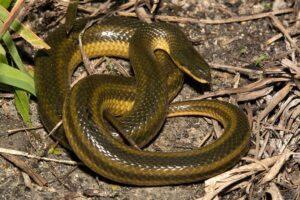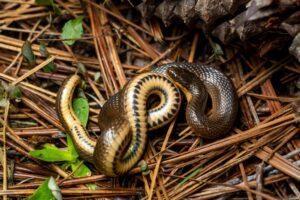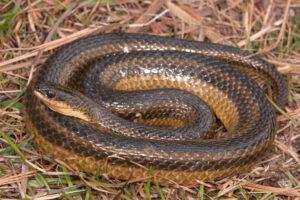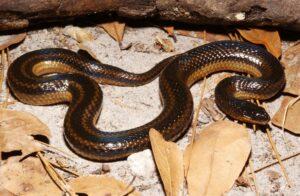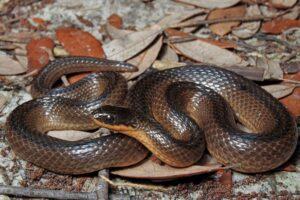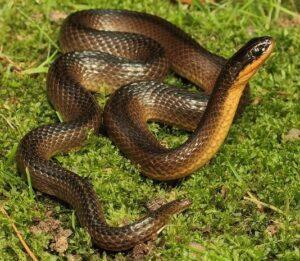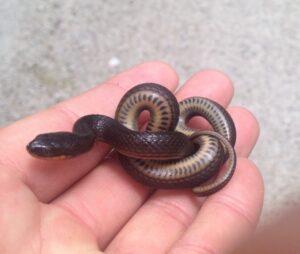The crayfish snake, also known as glossy crayfish snake, glossy swampsnake, glossy water snake, and striped water snake, is a semi-aquatic colubrid native to the south-eastern United States. As the name suggests, it preys mainly on crayfish. It is very stiff in its movements, as implied by the ‘rigida’ in its scientific name, that is the Latin word for stiff. Hence it is also known by the names rigid queen snake and stiff snake.
Scientific Classifications
- Suborder:Serpentes
- Family:Colubridae
- Genus:Liodytes
- Species:L. rigida
Conservation Status
Subspecies
The crayfish snake has three recognized subspecies.
- Delta crayfish snake (Liodytes rigida deltae)
- Glossy crayfish snake (Liodytes rigida rigida)
- Gulf crayfish snake (Liodytes rigida sinicola)
Description
Size
Full-grown adults have a total length of around 16 inches (41 cm) on average and are heavy-bodied.
Color and Appearance
The snake is olive-brown dorsally occasionally with a couple of blackish stripes. The upper lip scales are yellow. It is yellow on its ventral side, with two parallel lines of black spots that merge into a single line towards the front. The ventral side of the tail may have a black line running down its center.
The dorsal scales are arranged in 19 rows and are strongly keeled except for the first couple of rows. The first row is smooth, while the second one is weakly keeled. The anal plate is divided, and the eyes are large with round pupils.
Are They Dangerous to Humans
They do not cause any harm to humans. This is a snake that won’t bite in defense. When approached or cornered, it attempts to escape by entering the water and diving to reach the bottom. On being captured, it may flatten its head and release a fetid-smelling musk from a pair of glands at the base of its tail.
Crayfish Snakes at a Glance
Distribution
They are found in the coastal plains of the Atlantic coast and Gulf coast, namely in eastern Texas, southern Arkansas, southern Mississippi, southern Georgia, southern Alabama, south-eastern Oklahoma, Louisiana, northern Florida, eastern South Carolina and south-eastern North Carolina.
Habitat
Slow-moving waterways like cypress swamps, prairies, marshes, ponds, lakes, ditches, streams, and rivers are its natural habitat.
Though it is hard to find these secretive, nocturnal snakes away from water bodies, they can sometimes occur under logs and debris near water, in crayfish burrows, and crossing roadways on rainy nights.
Lifespan
It lives for 15-30 years like any other snake.
Predators
Other snakes like kingsnakes and cottonmouth snakes.
Source
reptilehow.com, floridamuseum.ufl.edu, i.pinimg.com, msherps.com, qph.cf2.quoracdn.net, calphotos.berkeley.edu, lh6.ggpht.com

